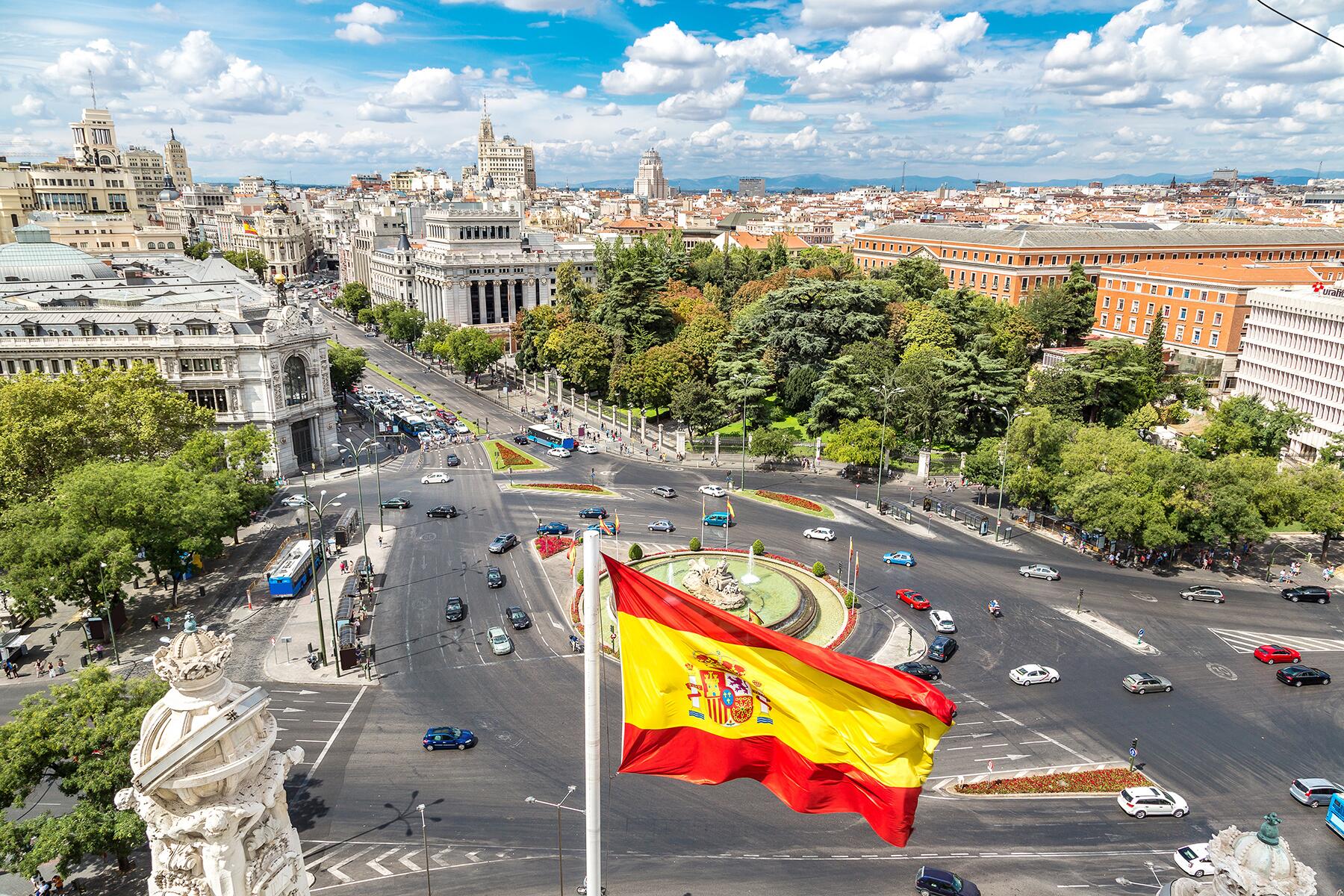From mouth-numbing spicy food to cultural immersion and outdoor adventures, there really is something for everyone in Sichuan’s vibrant capital city.
You’ll be hard pressed to find any city in China that offers as much to do and see as Chengdu–the provincial capital of Sichuan is famed for its abundance of giant pandas and peppercorns, as well as its proximity to historic and natural wonders. A long-time favorite destination for domestic Chinese tourists, the city is finally getting due recognition from international visitors thanks to an increase in the number of direct flights from the USA, Europe and South-East Asia. Here are 14 experiences you should absolutely try when you make it to Chengdu.
Top Picks for You
Turn Up the Heat with Spicy Hot Pot
Meals of fiery hot pot are mandatory for everyone in Chengdu, regardless of whether you are visiting for a day or have lived in the city your whole life. Served in enormous heated metal bowls at the center of the table, Sichuan hot pot is characterized by the mouth-numbingly spicy soup base–made up of chilies, Sichuan peppercorns, spicy oil and more–in which you cook your meat, vegetables, and offal.
There are an overwhelming number of hot pot places to choose from in Chengdu. Xiaolong Fandaqiao, Bashu Dazhaimen, and Chongqing Laohuoguowang are all highly recommended, where a meal of hot pot becomes more of a celebratory event than mere dinner. Hot pot is designed to be eaten in groups; if you are lacking in numbers, join up with other foodies on a tour with Chengdu Food Tours for a boisterous family-style dining experience.
INSIDER TIPOrder light beers and coconut milk to drink while you dine on spicy hot pot to avoid excessive sweating and/or crying. Almost all hot pot restaurants also offer a split-pot option, where one side of the pot is filled with spicy broth while the other comes with a simple chicken or tomato soup base.
Fill Up on Street Food
Not for nothing, Chengdu was named a UNESCO City of Gastronomy in 2011–it is the heartland of Sichuan cuisine, and there is much more to look forward to beyond spicy hot pot. While food carts are slowly disappearing off the streets of Chengdu, those you come across will often be serving Chengdu pancakes, or danhonggao. Made from an egg-based batter, the pancakes can wrap any combination of fillings you choose; popular options include potato and chilli sauce, or pork floss and pickled vegetables for those in need of a respite from the spice. Another popular street side treat is tangyouguozi (“fried sticky rice balls”), a sweet and chewy rice ball slathered with honey and sesame seeds. Look out for hole in the wall vendors selling chaoshou, the Sichuan-style dumpling made with pork and ginger that is served with a hot and sour dipping sauce. You can easily fill up on street food by looking out for these bites as you explore Chengdu, or join an evening food tour with Lost Plate for a curated experience.
INSIDER TIPNot all street vendors are made equally, so do not be shy about getting a closer look behind the scenes of their set up before you buy. If in doubt, always go to the stalls where there is a line.
Recommended Fodor’s Video
Hang Out with Giant Pandas
No trip to Chengdu is complete without visiting the city’s local celebrities, the Giant Pandas. A 30-minute cab ride takes you from the center of town to the leafy Chengdu Research Base of Giant Panda Breeding, home to approximately one hundred of China’s national treasures. Used to being the center of attention, the ursine residents are more than happy to while away the days lazing about and chewing on hand-cut bamboo in front of adoring crowds. Even panda skeptics will find it hard not to coo at the languid baby cubs climbing on top of one another at the base’s Sunshine Nursery enclosure.
INSIDER TIPAvoid the crowds by getting to the Research Base at 7:15 am to buy tickets; you’ll then be set to go in with the first wave of visitors when the doors open at 7:30 am.
Line Dance with Locals
Millions of middle- and retirement-aged women across China gather in parks and public spaces each day to exercise and socialise together through the medium of dance. The popular phenomenon, known as guangchangwu (“dancing in a plaza”), involves groups of between five and fifty dancing in sync to popular current and classic Chinese songs blasting from a communal speaker. Join in for free with Chengdu’s dancing damas (“elderly women”) at the centrally located People’s Park–you’ll find them there at dawn and dusk.
Wander the Tibetan Quarter
Transport yourself to China’s western frontier by wandering through Chengdu’s Tibetan Quarter. The streets around Wuhou Temple in the southwest of the city, also known as Little Lhasa, are great for Tibetan crafts and religious paraphernalia; colorful prayer flags, beads, and yak wool clothing are just a few of the myriad souvenirs you can pick up as you meander past shop stalls alongside Tibetan Buddhist monks. Once you’ve worked up an appetite, try a bowl of salty yak butter “tea” and yak meat pie at A’re restaurant for an authentic taste of Tibet.
INSIDER TIPBe prepared to bargain for any purchases as vendors in the area vastly inflate their prices. A rough guideline is to start at half of the asking price and negotiate up from there.
Get Your Ears Professionally Cleaned
As you browse the shops and stalls along Kuanzhai Xiangzi (“Wide and Narrow Alleys”), a bustling area of restored Qing dynasty laneways and courtyards in central Chengdu, you will likely come across several middle-aged men brandishing metallic implements enthusiastically in your direction. They are not deranged torture artists but Chengdu’s renowned ear cleaning masters, who artfully use a combination of picks, scoops, and cotton buds to rid your ears of excess grit and grime. If you are feeling brave, the whole process lasts around ten minutes.
Experience Sichuan Opera
For the uninitiated, a full-length performance of Sichuan opera may be too much of a shock to the system. Instead, opt for a taster of bianlian (“changing face”), where elaborately costumed performers rapidly switch colorful masks as part of moving through a series of different emotions and personas during a performance. Unique to Sichuanese opera, the face-switching mechanism behind bianlian is a closely guarded trade secret that is passed down from one generation of performer to the next. The Sichuan performing arts taster at Sanguo Teahouse in the Jinli alley is popular introduction to bianlian; with a running time of one hour, the nightly performance also features an acrobatic act using a long-spouted teapot, highlighting the importance of tea in the region.
Take Time for Tea
Do as the locals do and slow down with a cup of tea; there are plenty of picturesque outdoor courtyards from which to enjoy a glass of loose leaf tea in the Kuanzhai Xiangzi and Jinli alleys, or you can people-watch from the teahouses at People’s Park and the riverside Wangjianglou Park. Tea is very much a local pastime, with many residents choosing to spend their afternoons sipping tea while playing cards or mahjong with their friends.
Visit the Largest Carved Stone Buddha in the World
The Leshan Giant Buddha is the world’s largest carved stone Buddha, and that accolade is every bit as impressive as it sounds. Carved directly onto a cliff face and sitting pretty at 71 meters tall, there are two different ways to take in the Leshan Buddha. A more active option is to walk down from the sculpture’s head to the very bottom of his feet, or you can view the Buddha in its entirety from afar on an outdated ferryboat; each offers a very different perspective of the UNESCO World Heritage monument. Leshan is an hour south of Chengdu via high-speed train, and the Buddha is a 15-minute cab ride from the station.
Climb Mount Emei, a Sacred Buddhist Mountain
One of China’s Four Sacred Mountains of Buddhism, Mount Emei is 95 miles south of Chengdu and an accessible pilgrimage for Chinese Buddhists and hikers alike. Standing tall at 3,099 metres, the lofty summit of Mount Emei can be reached on foot in two days with an overnight stop–accommodation options include several temples that double up as affordable basic hostels for those attempting the seemingly endless stair climb to the top. If you are limited by time or fitness, there are various cable cars that shorten the hike to the top, or you can stick to hiking a lower section of the mountain. Those on a day-trip from Chengdu can aim to walk up to Qingyin Temple, where you will be greeted by red ribbons bearing blessings and wishes tied around the platforms and pavilions around the temple; it should take around three hours to complete the round trip.
Have a Vegetarian Feast at a Buddhist Temple
Thanks to the proliferation of hot pot restaurants in Chengdu, the city isn’t known for its healthy eating options. It may come as a surprise that some of the city’s healthiest dishes can be found at the vegetarian eatery within the grounds of Wenshu Monastery, a functioning Zen Buddhist temple in the northern part of Chengdu. Combine a visit to the monastic halls and tranquil gardens with a buffet feast at the vegetarian restaurant, or else be sure to order their signature huiguorou (“twice-cooked pork”), made instead with doupi (“tofu skin”).
Step into the Past at Jinsha
As impressive as Chengdu is today, archaeological evidence unearthed at two major sites in and around the city shows that the area has been occupied in a significant way for over four thousand years, starting with a bronze working culture known as the Shu. Discovered by accident in 2001, the Jinsha site in central Chengdu yielded the remains of palace foundations, several more dwellings, and a burial site in use between 1200BC and 650BC. Thousands of finds, including spectacular gold, jade, and bronze artifacts from the late Shu period, are displayed on site at the museum. Evidence from the earlier Shu period, typified by distinctive large bronze heads and figures, was first unearthed in 1929 at the site of Sanxingdui, 50 kilometers northeast of Chengdu.
Explore Mount Qingcheng, the Birthplace of Taoism
Known as the birthplace of Chinese Taoism in 142AD, Mount Qingcheng is within easy reach from Chengdu. Many of the temples dotted around the mountain date back to the Jin and Tang dynasties and are designed with Taoist architectural motifs. Located less than an hour away by high-speed train north-west of Chengdu, half- and full-day trips to Mount Qingcheng are doable depending on time and fitness. A couple of hours is more than enough for a walk up the front mountain and a scenic boat ride at Yuecheng Lake, or you can opt to try a full-day hike up the back mountain to Baiyun Temple and the 2,128-meter summit.
See an Ancient Irrigation System in Action
Scientists and engineers won’t want to miss a tour of the Dujiangyan Irrigation System, a marvel of engineering originally built in the third century BC that has diverted water from the Min River–a large tributary of the Yangtze River–into the Chengdu floodplain for over two millennia. So remarkable was the system of channeling and diverting water without the use of dams devised by engineer Li Bing that it continues to irrigate nearly 700,000 hectares of farmland today and prevent excessive flooding in the area.





